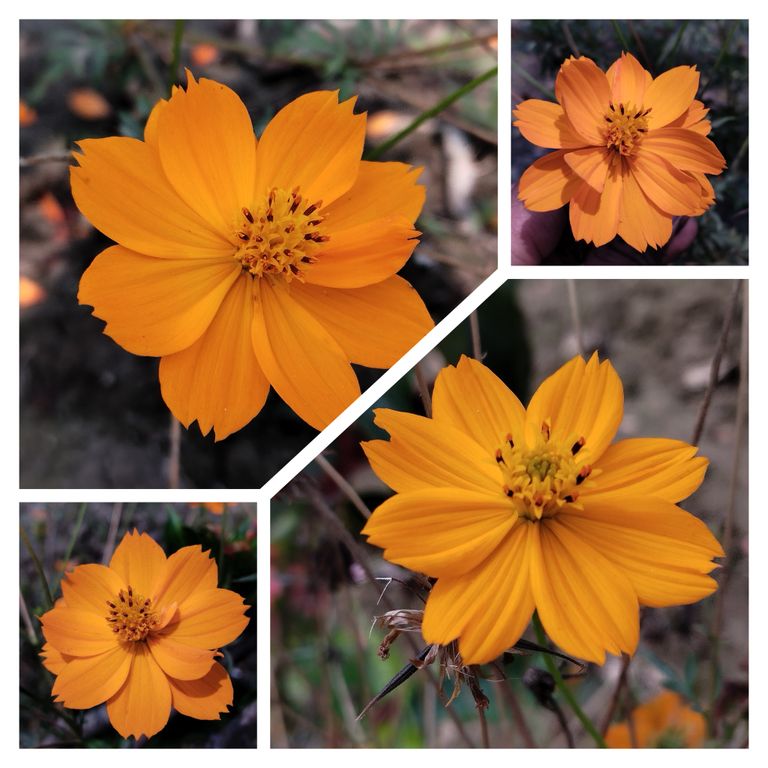
The Beauty of Cosmos Flowers A Blog on Nature's Elegance.
Cosmos flowers are a true representation of nature’s charm and elegance. With their vibrant colors and delicate petals, they have earned a special place in gardens, fields, and even floral arrangements. These beautiful flowers, part of the Asteraceae family, are not just a feast for the eyes but also carry deeper symbolic meanings. In this blog, we’ll delve into the beauty of cosmos flowers, their significance, cultivation tips, and how they enhance both natural landscapes and indoor settings.
- The Origins and Characteristics of Cosmos Flowers
Cosmos flowers, also known by their scientific name Cosmos bipinnatus, originated in Mexico and were introduced to other parts of the world in the 18th century. Over time, they have become a popular ornamental plant, adored for their ease of growth and striking beauty. The word "cosmos" is derived from the Greek word kosmos, meaning order or harmony, reflecting the symmetrical nature of the flower’s petals.
Cosmos flowers are typically daisy-like and come in a variety of colors, including white, pink, purple, red, and orange. Their petals are thin, light, and soft, with a distinctive round center that can range from yellow to red. These flowers are grown on tall stems that can reach up to 4 feet in height, making them an excellent choice for garden borders and backdrops. Their light, airy appearance makes them ideal for both wildflower meadows and more structured garden landscapes.
- Symbolism of Cosmos Flowers
Beyond their beauty, cosmos flowers also hold deep symbolic meanings. These flowers are often associated with peace, harmony, and order due to the symmetrical nature of their petals. In some cultures, cosmos flowers represent love, beauty, and elegance. They are frequently used in bouquets and arrangements to convey feelings of warmth and affection.
In addition, cosmos flowers are believed to symbolize balance and tranquility. Their simple yet captivating appearance has led them to be a popular choice for creating serene and peaceful spaces, whether in a garden or a room. Many people also associate cosmos flowers with personal growth and the search for inner peace, making them an ideal flower for those going through a period of self-reflection or emotional growth.
- The Aesthetic Appeal of Cosmos Flowers
One of the most appealing aspects of cosmos flowers is their wide variety of colors. Each color carries its own unique meaning and adds a different element to a garden or floral arrangement.
White Cosmos Flowers: White is often associated with purity and peace. White cosmos flowers are especially popular for weddings and other celebrations where peace and harmony are being celebrated.
Pink Cosmos Flowers: Pink is often linked to affection and love. Pink cosmos flowers can evoke feelings of warmth and tenderness, making them a popular choice for bouquets intended to convey romantic or familial affection.
Red Cosmos Flowers: Red is a color of passion and energy. Red cosmos flowers can represent love, desire, and the beauty of life. They are ideal for creating vibrant, eye-catching flower beds or bouquets.
Purple Cosmos Flowers: Purple symbolizes royalty, mystery, and creativity. Purple cosmos flowers add a regal touch to any floral display and are often used to evoke a sense of luxury and uniqueness.
Orange Cosmos Flowers: Orange is a color associated with enthusiasm and joy. Orange cosmos flowers are perfect for brightening up any space, symbolizing warmth and optimism.
These colors, combined with the graceful appearance of the cosmos flower, make it a versatile and dynamic addition to any garden or indoor decor.
- Growing Cosmos Flowers
Cosmos flowers are incredibly easy to grow, making them ideal for both novice and experienced gardeners. They thrive in well-drained soil and are relatively drought-tolerant, requiring little maintenance once established. Cosmos flowers can be planted from seeds, which should be sown directly into the soil after the last frost, or started indoors in pots and transplanted later.
Soil Requirements: Cosmos flowers prefer light, well-drained soil with a slightly acidic pH. They can tolerate poor soil conditions, making them ideal for wildflower gardens or areas where the soil is less than perfect.
Sunlight Needs: Cosmos flowers require full sun to grow to their full potential. They should be planted in areas that receive at least six hours of direct sunlight per day. The more sun they get, the more flowers they will produce.
Watering: While cosmos flowers are drought-tolerant, they still need regular watering, especially during dry spells. However, overwatering can lead to root rot, so it’s essential to ensure proper drainage and avoid waterlogging.
Space and Spacing: When planting cosmos flowers, give them plenty of space to grow. Cosmos plants can spread out significantly, and their long stems need room to sway in the breeze. Space them about 12 to 18 inches apart to allow for optimal growth.
Pruning: Although cosmos flowers don’t require much pruning, deadheading spent blooms will encourage the plants to produce more flowers throughout the growing season. This is especially important for keeping the plants looking tidy and maintaining a continuous show of blooms.
- Cosmos Flowers in Landscaping and Design
Cosmos flowers are incredibly versatile in landscaping and floral design. Their tall, airy stems and colorful blooms make them ideal for creating garden borders, wildflower meadows, or mixed perennial beds. Their delicate, lacy foliage adds texture and contrast to any garden design, and their long flowering period ensures a constant display of color throughout the growing season.
In Garden Borders: Cosmos flowers can be planted in garden borders to create a soft, flowing effect. Their light, feathery foliage contrasts beautifully with the sturdier, more structured plants in the border.
In Wildflower Meadows: Cosmos flowers are often used in wildflower meadows, where they can grow in clusters and attract pollinators like bees and butterflies. Their cheerful colors bring an added burst of life to natural landscapes.
In Containers: For those with smaller gardens or limited space, cosmos flowers can also be grown in containers. These portable plants can be moved around to different areas of the garden or patio, adding color and charm wherever they are placed.
In Floral Arrangements: Cosmos flowers make stunning additions to fresh floral arrangements. Whether used in a single-species bouquet or as part of a mixed floral display, their vibrant colors and graceful form are sure to enhance any design.
- Cosmos Flowers and Pollinators
Beyond their beauty, cosmos flowers also play an important role in supporting local ecosystems. These flowers attract a wide range of pollinators, including bees, butterflies, and birds. By planting cosmos flowers in your garden, you can help support these essential creatures and contribute to the health of your local environment.
Pollinators are crucial for the health of many plants, as they transfer pollen from flower to flower, facilitating the fertilization process. Cosmos flowers, with their bright colors and abundant nectar, are particularly attractive to pollinators, making them an excellent choice for anyone looking to create a pollinator-friendly garden.
- Cosmos Flowers in Art and Culture
Throughout history, cosmos flowers have been a popular subject in art and culture. Their delicate, intricate petals and vibrant colors have inspired artists, poets, and designers alike. They are often featured in botanical illustrations and paintings, with their graceful form and symmetrical beauty captured in fine detail.
In addition, the cosmos flower has found its way into popular culture, particularly in literature and music. Its symbolism of love, peace, and balance has made it a favorite motif in various artistic expressions.
Conclusion
Cosmos flowers are a true testament to the beauty of nature. Their vibrant colors, delicate petals, and symbolic meanings make them a beloved choice for gardeners, florists, and nature enthusiasts. Whether you’re looking to add a splash of color to your garden, attract pollinators, or simply enjoy the elegance of these flowers, cosmos blooms offer something special for everyone.
Their versatility, ease of care, and aesthetic appeal ensure that they remain a timeless favorite in gardens and homes around the world. So, the next time you see a cosmos flower, take a moment to appreciate not just its beauty but the peace and harmony it symbolizes.
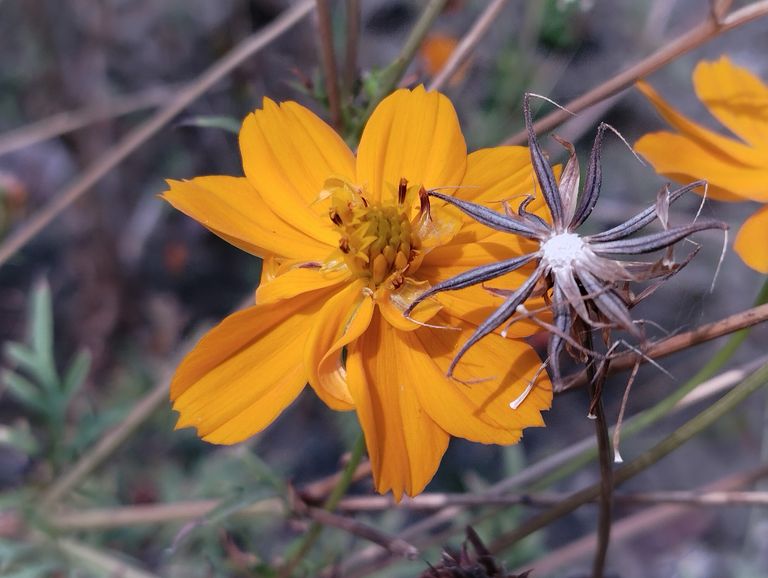
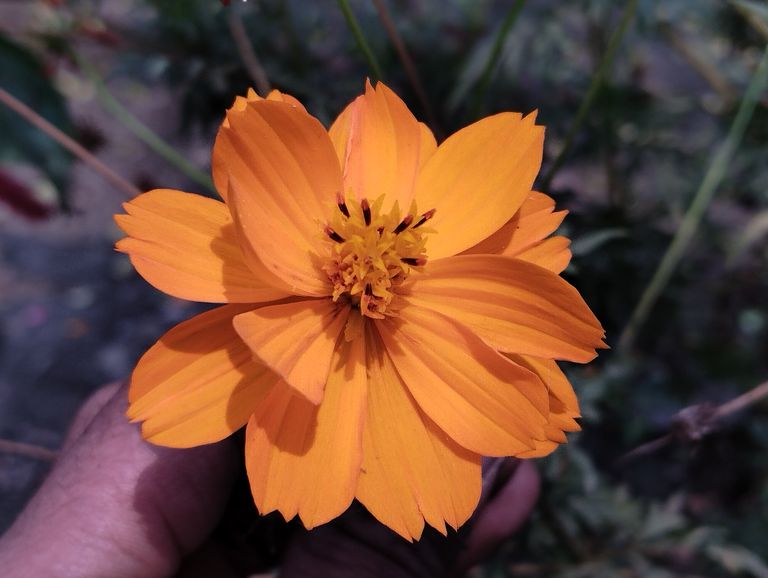
Exploring the Enchanting Cosmos Flower Garden
Nature has an extraordinary way of captivating our hearts, and one of its most mesmerizing creations is the cosmos flower. With their delicate petals and vibrant hues, cosmos flowers paint the landscape in breathtaking beauty. If you’re looking for a peaceful escape into nature, visiting a cosmos flower garden is an experience that will leave you in awe.
A Glimpse into Cosmos Flowers
Cosmos flowers belong to the Asteraceae family and are native to Mexico and Central America. These charming blooms are known for their daisy-like appearance, with feathery foliage and long, slender stems that sway gracefully in the wind. Cosmos flowers come in a variety of colors, including shades of pink, white, red, yellow, and even deep maroon. Their simple yet elegant beauty makes them a favorite among garden enthusiasts and nature lovers.
Best Time to Visit a Cosmos Flower Garden
Cosmos flowers bloom in abundance during late summer and fall, although their peak season varies depending on the region. In tropical and subtropical climates, they can bloom almost year-round. The ideal time to visit a cosmos flower garden is from September to November, when the flowers are in full bloom, creating a picturesque landscape that looks like something out of a dream.
Where to Find Cosmos Flower Gardens
Cosmos flower gardens can be found all over the world, particularly in countries with a mild climate. Some of the most famous places to witness these stunning blooms include:
Hitachi Seaside Park, Japan – Known for its rolling fields of colorful cosmos flowers in autumn.
South Korea’s Cosmos Flower Fields – Various regions, including Guri Hangang Park and Nari Park, offer spectacular views.
Hokkaido, Japan – The Furano region is famous for its stunning flower fields, including cosmos flowers.
Taoyuan Valley, Taiwan – A lesser-known but breathtaking spot to see cosmos flowers in full bloom.
Garden Festivals and Parks in Europe and the USA – Many botanical gardens and seasonal flower festivals feature cosmos flowers as part of their displays.
If you’re in your home country, local botanical gardens or flower festivals may also have dedicated sections for cosmos flowers.
The Magical Experience of Walking Through a Cosmos Garden
Imagine stepping into a vast field where thousands of cosmos flowers stretch as far as the eye can see. The soft breeze carries their delicate fragrance, and the gentle rustling of the flowers creates a soothing melody. The sight of butterflies fluttering from one bloom to another adds to the garden’s magical charm.
Walking through a cosmos flower garden is not just a visual treat; it’s a moment of peace and connection with nature. Whether you’re a photographer, a nature lover, or simply someone seeking a tranquil retreat, these gardens offer an unforgettable experience.
Photography Tips for Capturing the Beauty of Cosmos Flowers
If you love photography, a cosmos flower garden is a paradise. Here are some tips to capture their beauty perfectly:
- Golden Hour Magic – Visit the garden early in the morning or late in the afternoon for soft, golden light that enhances the flowers' colors.
- Use a Macro Lens – Capture the intricate details of the cosmos petals and the tiny pollinators that visit them.
- Experiment with Angles – Shoot from different perspectives, including low angles, to create unique compositions.
- Include the Sky – A clear blue sky or dramatic clouds can add depth to your photos.
- Focus on the Details – A single cosmos flower against a blurred background can create a stunning artistic shot.
How to Grow Your Own Cosmos Flower Garden
If visiting a cosmos garden inspires you to create your own, the good news is that cosmos flowers are easy to grow. Here’s a simple guide:
- Choose the Right Location
Cosmos flowers thrive in full sunlight and well-drained soil. They are hardy plants that can tolerate poor soil conditions, making them perfect for beginner gardeners.
- Sow the Seeds
Plant cosmos seeds directly into the soil after the last frost.
Scatter the seeds and lightly cover them with soil.
Water gently and keep the soil moist until the seeds germinate.
- Provide Minimal Care
Watering: Cosmos flowers do not require frequent watering. Water them moderately, allowing the soil to dry between watering sessions.
Fertilizing: Avoid excessive fertilizers, as they can cause more foliage growth instead of blooms.
Pruning: Regularly deadhead faded flowers to encourage continuous blooming.
- Enjoy the Bloom
Once they start blooming, cosmos flowers will continue to brighten up your garden for months. Their drought tolerance and ability to attract pollinators make them an excellent addition to any outdoor space.
The Symbolism and Cultural Significance of Cosmos Flowers
Beyond their beauty, cosmos flowers hold symbolic meanings in different cultures. They are often associated with peace, harmony, and love. Their name, derived from the Greek word kosmos, means order and balance, reflecting the symmetrical beauty of their petals.
In some traditions, cosmos flowers are given as a symbol of affection and gratitude. They also play a role in festivals and celebrations, particularly in countries like Japan and South Korea, where flower festivals draw thousands of visitors each year.
Why You Should Visit a Cosmos Flower Garden
If you’ve never experienced the charm of a cosmos flower garden, here are some reasons why you should add it to your travel list:
Relaxation and Stress Relief – The serene environment helps in reducing stress and promoting relaxation.
Photography and Creativity – A paradise for photographers, artists, and nature lovers.
Connection with Nature – Walking through a field of cosmos flowers is a reminder of nature’s simple yet profound beauty.
Perfect for Family and Friends – A great outdoor activity for spending time with loved ones.
Inspiration for Gardening – Seeing these flowers in full bloom might inspire you to grow your own garden.
Final Thoughts
Visiting a cosmos flower garden is a delightful experience that allows you to immerse yourself in nature’s vibrant beauty. Whether you travel to a famous cosmos field or plant your own blooms at home, these flowers bring joy and tranquility to anyone who encounters them.
So, the next time you find yourself longing for a peaceful retreat, consider wandering through a cosmos flower garden. Let the gentle sway of the blossoms and the burst of colors remind you of the simple joys that nature has to offer.
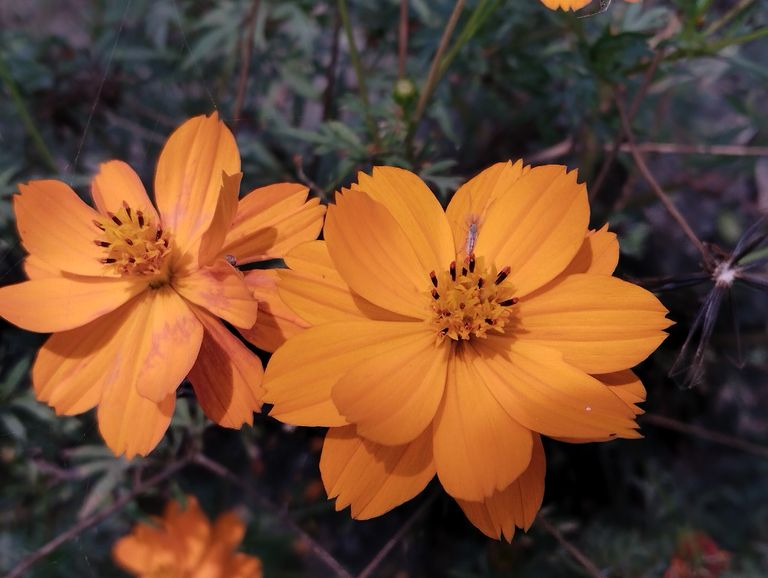
Common Diseases and Pests of Cosmos Flowers and Their Management
Cosmos flowers (Cosmos spp.) are beloved for their vibrant colors, delicate petals, and ability to thrive in various climates. However, like all plants, cosmos can be affected by various diseases and pests that hinder their growth and beauty. In this article, we will explore common cosmos flower diseases, their causes, symptoms, and effective management strategies.
- Fungal Diseases in Cosmos Flowers
Fungal infections are among the most common problems affecting cosmos flowers. These diseases often develop due to excessive moisture, poor air circulation, or contaminated soil.
1.1 Powdery Mildew
Cause: Erysiphe cichoracearum (a fungal pathogen)
Symptoms:
White, powdery spots on leaves, stems, and buds
Leaves turning yellow and curling
Stunted growth and reduced flowering
Management:
Ensure proper air circulation by spacing plants well
Avoid overhead watering and keep foliage dry
Apply sulfur-based fungicides or neem oil as a preventive measure
1.2 Gray Mold (Botrytis Blight)
Cause: Botrytis cinerea (a fungal pathogen)
Symptoms:
Brown or gray fuzzy mold on flowers, buds, and leaves
Flower petals turning brown and wilting
Leaves becoming soft and decayed
Management:
Remove infected plant parts immediately
Improve airflow by pruning dense foliage
Apply organic fungicides like copper-based sprays
1.3 Leaf Spot Disease
Cause: Cercospora or Alternaria fungi
Symptoms:
Small brown or black spots on leaves
Leaves turning yellow and falling off
Stunted plant growth
Management:
Keep the garden clean by removing fallen leaves
Avoid excessive moisture around plants
Use fungicides containing chlorothalonil or mancozeb
- Bacterial Diseases in Cosmos Flowers
Bacterial infections are less common but can be highly destructive. They often spread through contaminated soil, water, or infected plant debris.
2.1 Bacterial Wilt
Cause: Ralstonia solanacearum
Symptoms:
Sudden wilting of plants despite adequate watering
Leaves turning yellow and drooping
Dark streaks in stems when cut open
Management:
Avoid planting cosmos in infected soil
Remove and destroy affected plants
Use disease-resistant varieties if available
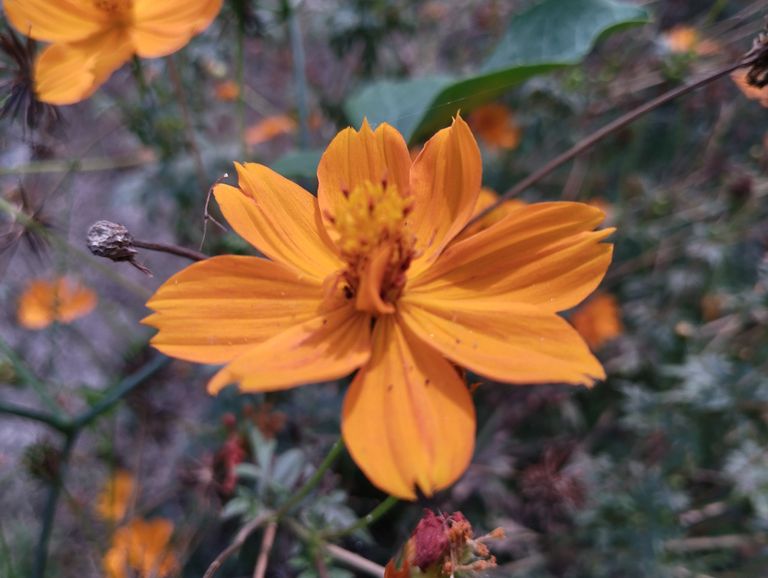
2.2 Bacterial Leaf Blight
Cause: Xanthomonas bacteria
Symptoms:
Water-soaked lesions on leaves, which turn brown
Yellowing and dropping of leaves
Stunted plant growth
Management:
Avoid overhead watering
Remove infected leaves promptly
Apply copper-based bactericides as a control measure
- Viral Diseases in Cosmos Flowers
Viral infections are primarily spread by insect vectors like aphids, thrips, and whiteflies. These diseases can severely affect plant health and reduce flowering.
3.1 Aster Yellows
Cause: Phytoplasma bacteria, spread by leafhoppers
Symptoms:
Yellowing and curling of leaves
Deformed flowers with greenish petals
Stunted and abnormal growth.